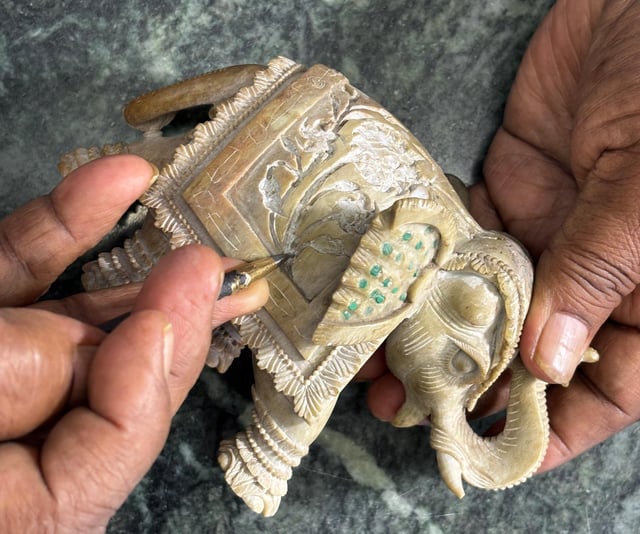History of Marble Inlay Art in Agra


The Origins of Marble Inlay in India
Originally practiced in Florence, Italy. The ancient art of marble inlay in Agra, India can be traced back to the Mughal era, particularly during the reign of Emperor Akbar in the late 16th century. This exquisite craftsmanship emerged as a blend of Persian and Indian artistry, focusing on enhancing the natural beauty of marble through intricate designs and the use of natural precious and semi precious stones. The technique served as a lasting representation of the grandeur and sophistication of Mughal architecture.
Techniques and Materials Used in Marble Inlay
Marble inlay, known locally as ‘Parchin Kari / Pacchekari,’ involves an elaborate process where artisans meticulously carve intricate patterns into the surface of marble (sourced from the quarries of Markrana, Rajasthan) which are inlaid with precisely shaped patterns made of high quality natural gemstones such as lapis lazuli, jade, malachite, cornelian and turquoise, which are selected for their color and luminosity. The craftsmanship necessitates specially designed hand tools which allows artisans to create stunning visual compositions. Artisans employ tools such as chisels and hand driven grinding wheels to make different artifacts.
The Legacy and Present Status of Marble Inlay Art
Today, marble inlay continues to thrive in Agra, attracting both amateur and discerning art enthusiasts. The craftsmanship is not only a national heritage, but also contributes to the economy through tourism and the sale of unique marble inlay products and artworks. Several workshops of skilled artisans, many of whom are the direct decedents of the earliest craftsmen, still practice this prestigious art form. These workshops offer visitors firsthand opportunity to witness the intricate process, fostering an appreciation for this traditional art form. Subhash Emporium, is the oldest, most desirable gallery and workshop to appreciate the finest, most intricate works of this art. Their legacy collection displayed in the museum section, showcases artworks of marble inlay which the world's best museums will be proud to have on display.
Despite the advancements in technology and changes in artistry, the essence of marble inlay in Agra remains deeply rooted in its historical context. Educating people about this significant cultural heritage helps in preserving the art form for future generations. Thus, the history of marble inlay art not only highlights a unique aspect of Agra's cultural heritage, but also reinforces the importance of maintaining traditional crafts in the modern world.
An art, which was once practiced to decorate the royal architectural structures, now blooms in the form of brilliant modern artifacts.
